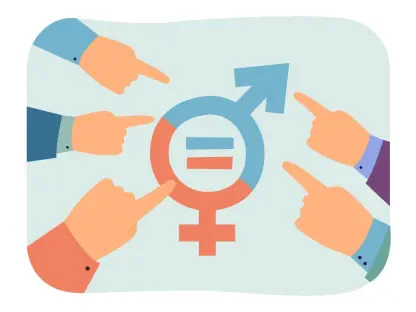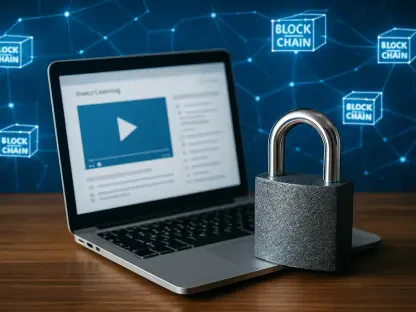Amidst the backdrop of ongoing security concerns in Ukraine, online learning has emerged as a vital lifeline for countless schoolchildren, ensuring education continues despite significant challenges as of early 2025. With 13% of students fully engaged in online formats and another 17.8% participating in blended learning models, remote education has shifted from a temporary solution to an enduring necessity for many. This reality, driven by safety issues, has thrust digital classrooms into the spotlight, revealing both the potential of technology to bridge gaps and the stark inequalities that threaten to widen them. This exploration delves deep into the mechanisms of online learning in Ukraine, examining the regulatory frameworks that shape its implementation, the digital divide that hinders equal access, and the varying quality of instruction across regions. Beyond mere statistics, the narrative uncovers the human impact of these disparities, from rural students struggling with basic tools to urban learners navigating more robust platforms. The aim is to shed light on how these challenges interplay with socio-economic factors, creating a fragmented educational landscape. As the system grapples with ensuring equity, the insights presented here highlight the urgent need for targeted solutions to support all students, regardless of their circumstances.
Laying the Foundation: Policies and School Autonomy
The structure of online learning in Ukraine rests on key regulations established in 2020 through MES Order No. 1115, which granted schools significant autonomy in selecting digital tools for distance education. This policy empowers institutions to choose platforms like Google Classroom, Moodle, or Zoom based on their specific needs and capabilities. While this flexibility fosters innovation and allows schools to tailor approaches to their communities, it also introduces a notable downside: inconsistent implementation across the country. Some schools, particularly those with strong leadership and resources, have successfully integrated sophisticated platforms to create dynamic online environments. Others, however, lack the infrastructure or expertise to do so, often resorting to less effective methods. This lack of uniformity means that a student’s learning experience can vary dramatically depending on their school’s capacity, raising concerns about fairness in access to quality education during times of crisis.
Further complicating the landscape is the absence of strict, standardized guidelines to ensure all schools meet a baseline of quality in online instruction. While the Ministry of Education and Science (MES), alongside organizations like Smart Education, provides recommendations for adopting robust digital tools, the reality on the ground often diverges from these ideals. In many cases, schools are left to navigate the complexities of remote learning independently, without sufficient training or financial support. This results in a patchwork system where some students benefit from well-organized virtual classrooms, while others are relegated to informal tools like messaging apps that fail to deliver structured learning. The disparity in how schools exercise their autonomy underscores a critical challenge: without cohesive oversight, the potential of online education to serve as an equalizer remains unfulfilled, leaving many students at a disadvantage.
Bridging or Widening the Gap: The Digital Divide
At the heart of Ukraine’s online learning challenges lies a pervasive digital divide that starkly illustrates the inequality in access to essential resources. Unlike traditional classrooms where materials like textbooks are typically provided, remote education hinges on a family’s ability to afford personal devices and reliable internet connections. Data reveals that while approximately 80% of students have access to smartphones, only about 57% possess a personal laptop, computer, or tablet suitable for comprehensive learning. This discrepancy creates immediate barriers, as smartphones often lack the functionality needed for tasks like writing essays or engaging with interactive content. For many, the absence of a dedicated device translates into inconsistent access to educational materials, hampering their ability to keep pace with peers who are better equipped.
Compounding this issue is the reality of shared devices within households, which further limits students’ opportunities to engage fully with online lessons. Beyond hardware, internet stability remains a significant hurdle, with only 60% of students reporting reliable connectivity. This figure drops sharply among lower-income families, where economic constraints exacerbate technical challenges. Additionally, the home environment itself plays a crucial role—many students lack a quiet, dedicated space to study, making concentration difficult amidst household distractions. This multifaceted digital inequality is not merely a technological problem but a reflection of deeper socio-economic disparities. As online learning becomes a cornerstone of education in Ukraine, these barriers threaten to exclude a significant portion of students from achieving their potential, highlighting the urgent need for interventions that address both access and affordability.
Location and Income: Disparities Across Regions and Classes
Geography plays a pivotal role in shaping the online learning experience for Ukrainian students, with a clear divide between rural and urban settings. In rural areas, particularly villages, students are far more likely to rely on messaging apps like Viber for instruction, tools that lack the structure and interactivity of dedicated educational platforms. By contrast, urban students, especially those in regional centers, often have access to more advanced systems like Google Classroom, which better support organized learning. This disparity is rooted in differences in infrastructure and resource allocation, with urban schools typically benefiting from greater funding and technical support. The result is a fragmented educational landscape where a student’s location can significantly influence the quality of their online education, raising questions about how to ensure equitable access across diverse regions.
While geography is a factor, socio-economic status emerges as an even more decisive determinant of online learning outcomes in the current context. Families with limited financial resources, regardless of whether they live in cities or rural areas, face greater challenges in securing stable internet and personal devices. Recent data indicates that 26% of students from low-income households experience regular connectivity issues, a stark contrast to their wealthier counterparts. This shift in focus from infrastructure-related problems, such as power outages in previous years, to economic barriers in the present underscores a critical evolution in the nature of digital inequality. Addressing this challenge requires solutions that go beyond technical fixes, such as subsidies for internet access or device distribution programs, to tackle the root financial constraints that prevent many students from fully participating in remote education.
Tools of Learning: Platforms and Instructional Quality
The choice of digital tools significantly impacts the effectiveness of online learning in Ukraine, with Google Classroom emerging as the dominant platform, utilized by nearly 60% of students in online or blended formats. This widespread adoption reflects its user-friendly interface and capacity to organize assignments and materials efficiently. However, a concerning 21% of students depend exclusively on messaging apps like Viber and Telegram, particularly in rural areas, where these tools are often the only accessible option. Such platforms, while convenient for basic communication, fall short in providing structured learning environments or real-time interaction, leaving students at a disadvantage compared to those using more comprehensive systems. This disparity in tool usage highlights a critical gap in the quality of education delivered through remote means.
Equally troubling is the limited integration of synchronous learning opportunities, such as live lessons via Zoom or Google Meet, which are essential for maintaining student engagement and providing direct teacher guidance. For many, especially those reliant on asynchronous methods through messaging apps, the absence of real-time interaction undermines the learning process. This issue is compounded by inconsistencies in teacher training and school resources, as not all educators are equipped to leverage digital platforms effectively. Some manage to create engaging virtual classrooms, while others struggle to adapt, resulting in varied instructional quality across the board. Without a concerted effort to standardize platform use and enhance teacher support, the potential of online learning to deliver consistent, high-quality education remains elusive, risking further disparities in student outcomes.
Hidden Costs: Impacts on Knowledge and Social Skills
A growing concern among parents and educators in Ukraine centers on whether online learning can deliver the same depth of knowledge acquisition as traditional classroom settings. The lack of face-to-face interaction with teachers often means students miss out on immediate feedback and personalized guidance, elements crucial for grasping complex concepts. This challenge is particularly acute for those with limited access to structured platforms or stable internet, as they may struggle to engage with lessons in a meaningful way. The potential for gaps in understanding looms large, especially in subjects that require hands-on practice or collaborative discussion, raising alarms about the long-term academic impact of prolonged remote education on a generation of learners.
Beyond academic concerns, the social implications of online learning add another layer of complexity to the educational landscape. Remote formats inherently limit opportunities for peer interaction, which are vital for developing communication, teamwork, and emotional intelligence. For many Ukrainian students, the isolation of learning from home not only affects their social growth but also contributes to feelings of disconnection and stress during an already tumultuous period. This impact is not uniform—students from disadvantaged backgrounds, who already face digital barriers, are often the most affected, as they may lack alternative avenues for social engagement. The dual threat to both knowledge acquisition and social development underscores the need for a holistic approach to online education that addresses emotional as well as academic needs.
Shifting Obstacles: From Infrastructure to Economic Barriers
The challenges surrounding online learning in Ukraine have evolved significantly over recent years, reflecting broader changes in the country’s circumstances. Previously, issues like frequent power outages posed major hurdles to consistent access, disrupting lessons and connectivity. However, the focus has now shifted toward economic barriers as the primary obstacle, with many families struggling to afford reliable internet or personal devices essential for remote education. This transition highlights a critical reality: while infrastructure improvements have mitigated some technical challenges, financial constraints remain a persistent barrier, particularly for lower-income households where even basic connectivity can be out of reach, thus limiting students’ ability to participate fully in digital classrooms.
Despite these hurdles, there have been notable strides in addressing access gaps, with personal device ownership increasing from 48% in 2023 to 57% in the present, largely due to initiatives that have delivered over 262,000 devices since earlier efforts began. Yet, the need remains substantial, with an estimated 284,000 additional student devices required to close the gap. This persistent shortfall signals the scale of the challenge ahead and the importance of sustained intervention. Tackling these evolving obstacles demands a multifaceted strategy that includes not only expanding device distribution but also implementing economic support measures like internet subsidies. Without such comprehensive efforts, online learning risks becoming a source of deepened inequality rather than a tool for educational continuity, leaving many students on the margins of progress.
Moving Forward: Addressing Inequalities in Retrospect
Reflecting on the state of online learning in Ukraine, it became evident that while it served as a critical lifeline during periods of heightened security concerns, the system grappled with profound disparities that tested its resilience. The reliance on digital platforms like Google Classroom by a majority stood in stark contrast to the significant minority who depended on inadequate messaging apps, revealing a fragmented educational experience shaped by access and quality. Data from the time painted a sobering picture: limited personal device ownership and unstable internet, particularly among economically disadvantaged families, underscored how deeply socio-economic factors influenced learning outcomes. Geographic divides further compounded these issues, with rural students often left behind compared to their urban peers.
Looking back, the path forward required a deliberate focus on actionable solutions to bridge these gaps. Expanding device distribution programs to meet the unmet need for nearly 284,000 student devices was seen as a tangible step, alongside economic support for affordable internet access to alleviate financial burdens. Standardizing the use of structured platforms and prioritizing synchronous learning opportunities were also deemed essential to enhance instructional quality across diverse settings. These measures, combined with targeted teacher training, held the promise of transforming online education into a more equitable system. By addressing both technical and economic barriers, there was potential to ensure that remote learning not only sustained education during crises but also fostered an inclusive environment where every student could thrive.









